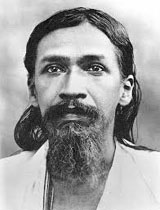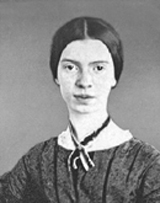Drama Therapy
All the world’s a stage: on drama therapy
Abstract
This article discusses the many personalities each individual possesses that makes him act as though he were many actors, switching roles seamlessly during the course of the day. When this acting is done consciously and for the purpose of healing, it is called drama therapy. It is a form of expressive arts therapy that draws out repressed emotions to the surface for cleansing purposes. A repressed affect causes pathology in other layers of the being and can be an invisible drag on the person’s well-being. The process of expressing it releases the repressed emotion’s hold on the psyche. Trauma victims enact the scenes of their trauma and socialise the crime to heal their own wounding. Those in the audience who may have suffered a similar fate also find solace. In the safe container created by the therapist the drama can be acted out, repeatedly if needed, with new and positive endings. Many festivals and rituals in pre-modern cultures addressed this need to dramatise, to play-act, to externalise, to transcend one’s ordinary reality.
These are ponderings of a philosopher in Shakespeare’s play, As You Like It. Like so many of Shakespeare’s profound observations, spread all over his prodigious writings, these lines stand out, outside the scheme of the story, as a universal fact. When we step back as witness and look at our life as a cinema, we find many sub-personalities within us, each one a distinct entity.
Thus, we play many parts. Some of them appear chronologically. Many are present simultaneously. The solemn husband in the morning is the strict manager at work during the day and the indulgent father at night. On some days, he is his wife’s playmate; some other times he is the lover, the taskmaster, the therapist, the teacher, the student or the supplicant. We don’t have a multiple personality disorder because we have a central entity that is aware of the various roles we play. This is the ego. It manages the switching from role to role as the sūtradhāra. And as the narrator in the play it establishes continuity, a storyline, a central thread that binds all the others together.
The Bhakti path looks at life as a pleasant drama, a game, a lila. Often during a nasty argument, I have wished we were in the theatre of life. After the scene ends, the antagonistic actors would step out of the stage, meet in the green room, peel off their costumes, and be their natural selves. We would then share a good laugh together about how well we enacted our parts during the argument. Wouldn’t it be wonderful if all the events we regret were wiped out clean with the fall of the curtain every day? Although man is mostly wearing an actor’s costume, in his natural home he can be his naked self, before his true parents and soul-bride. Ever since Eve bit into the apple of good and evil, the sense of unnaturalness has dogged humanity. In Indian myths, the Supreme created the Other and the subsequent fall, to enjoy reuniting with Himself. Duality was born from unity. In us the carrier of the cross of duality is the ego.
These multiple roles do not mean we cannot be integrated human beings. These are external social roles we play to survive in a collective. Nor are these dramas the melodrama that is the realm of the vital. As Sri Aurobindo explains, using the word ‘drama’, not as an art form but as melodrama sourced from the turbulent vital:
“But if you will try to fathom the significance of your own admission of liking drama or of the turn towards drama — from which very few human beings escape, and if you go deep enough, you will find that there is something in the vital which likes suffering and clings to it for the sake of the drama. It is something below the surface, not on the surface, but it is strong, almost universal in human nature and difficult to eradicate unless one recognises it and gets inwardly away from it (1).”
We could call the drama that heals ‘positive drama’. It is done consciously, in front of those who have created a safe environment for the actor. It includes relationships between people who are non-judgmental, supportive, and loving. The negative drama can show up as emotional blackmail, revenge, punishment, passive aggressive behaviour, silent treatment, anger, abuse and so on. While living life, it is important to be conscious of the fact that we are role-playing most of the time. It is then possible to do it for self-healing, for communitarian healing, and releasing the ego of self-hatred or self-infatuation.
Have you sometimes felt like being alone for some soul-searching? Have you felt like taking a vacation from yourself? Or pretending you are in disguise? You do not have to conform to what people think you are, nor to what you think is good or bad. This device, the pretend play, is part of cultural festivals, such as the masquerade balls in Venice, the costume carnivals of the Mardi Gras, and the Halloween parties where you get to act out anything from the scary felon to the fairy queen. In societies where there isn’t this avenue of escape into self-exploration, people feel imprisoned in themselves.
Little wonder, there is a wing of psychotherapy called drama therapy. Every night in our dreams we escape the straightjacket of our social circumstances. Pretend play makes us imaginative, dreamy, trippy. Creative juices moisten our souls. We get to live many lives within a single life. The therapist’s chamber is called the ‘Play Space’. Here the analysand gets to relax, pretend to be one of her personalities, imagine dialogues with others or with sub-parts within herself. She can be her future or ideal self. She can create a dynamically changing scenery, full of unknowns, that keeps her curiosity fresh. The game starts with no pre-meditated goal. As she explores the inner space, with or without prompts from the therapist, the analysand actively imagines the next move. She creates a formation that could materialise in her real life. Such is the power of play-acting, which is why drama therapy has a track record of success stories.
Drama can be healing when done intentionally. Its secret of healing lies in the fact that it pulls out an affect that was repressed within, such as a childhood trauma, or some shame or guilt. These energies are like churning eddies that pull the person down. Repressions show up as symptoms in the other layers of the being — as lack of mental concentration, dullness in the vital, or skin diseases in the physical. All these together are called pathologies, which can be cured with drama therapy, because it is a tool to draw out hidden stuff. The person enacts the traumatic event in her life. The retelling of her story dislodges it from her inner being and places it outside, in a larger space. The victim can get fresh air to breathe, which means a fresh perspective.
A repressed emotion can be explored in various forms of expressive arts, such as dance, poetry, songs, drawing. It can become a dialogue with the tormentor, and with the witnesses. Reality can be re-imagined. Emotions can be amplified to get to the heart of the matter. When the actor shares the drama with others, chances are that she will meet others who have had similar experiences. They will be willing to share, finding in her a sympathetic listener. Together they can support each other.
Is it easy to enact one’s own traumas? Not at all. The process of psychotherapy is self-work and therefore hard work. Imagine if Draupadi were to act out the court scene where she was insulted she would have to relive that trauma. But she also gets to imagine a new outcome. She could put words in the mouth of the elders like Bheeshma and Drona, who were silent witnesses to her shame. She could enable her husbands to protect her honour. In fact she could change the script so drastically she would never become a gambling bet. Women in Draupadi’s situation, who have access to healing services, re-enact the dramas of their abuse in therapy sessions. Even watching a drama can be healing.
Dramatists have re-written the scene from the Mahabharat. One of them is the well-known Bengali actress, Shaoli Mitra. Her two-hour solo acting of Draupadi in that court and her powerful questions have shaken the audience to tears. People have watched her play multiple times, and have been moved by it each time. Drama therapy works in a repetitive manner. The message has to be reinforced to be internalised. Shaoli Mitra acts as the therapist, healing the people in the audience, who are no less part of the drama. The name of the play is significant — Naathboti Anaathbat, which can roughly be translated as “One with husband is as though unmarried, or a woman with protectors, is nonetheless unprotected.”
The passage from one phase of life to another is marked by a rite of passage in many pre-modern societies. In a Native American wilderness quest, a person would venture out alone in nature for several days, not come in contact with anyone or anything made by man, not eat food, be concentrated in the soul. During this journey he would meet his spirit-guide, perhaps as his power animal. He would be given a message, maybe his life’s mission. He would return with the guide as his lifelong companion. African hunting tribes have a rigorous process of graduating a male child to an adult. He has to rough it out alone in the jungle, survive hunger and wild beasts. Otherwise he may not be able to lead a group of hunters. There are similar rites of passage for young girls who need to be deserving of the hardships of motherhood. When these people grow old, their life-experiences would provide the wisdom container for the younger generation. Leadership and Eldership were earned through rigorous rites of passage.
It is easier to ‘graduate’ in modern society, where rites of passage have become college ragging sessions and board exams. Fair leadership is not taught. Eldership is not an aspiration. The role of the shaman is all but gone. The priest or clergyman does not fit that role. The shaman was the medicine-man, healer of people’s bodies and souls, the community’s body and soul, channel of supernatural wisdom. He brought down rain to nourish the body of the village. He told the people where to hunt and fish. He resolved inter-personal disputes. He made peace with other villages. He inspired the new generation.
The rite of passage is a positive drama. Each one writes the script of his own drama for the blossoming of his soul. The rite could include physical rituals, such as fasting and bowing down before trees. The vital and mental sheathes are likewise purified, such as dropping emotional baggage, clearing the mind of distracting thoughts. One has to be fearless in the wild, meet snakes with kindness and share one’s earthen bed with ants. This drama has words too. Active imagination can initiate the process of dialoguing with supernatural beings. The ego plays the part of the curtain pusher. He then steps aside graciously. The higher realms of the mind then take over. The ego is just a scribe, much like its function as a dream recorder. The guide may take the sojourning soul to a land full of dangers. He has to be a hero. He has to fight evil creatures. He has to rescue the treasure, his own soul-powers. The plenitude he has found in his rite of passage is the gift he has to bring back upon his return. When he is an Elder, he will lead youngsters in their own rites of passage.
Well, if we must play many parts, it will be best to play them authentically, without the stress of having to please the audience. When the ego is in league with our plan, perhaps it won’t scream in terror when we play the part of the tramp or the tyrant, or whatever we deem to be our ‘opposite’. It will not even worry if we drop all parts. Then we can be free to hitch a ride, as the froth on a wave. Let me end with a refreshing and liberating poem by Emily Dickinson (1830-1886):
“I’m nobody! Who are you?
Are you nobody, too?
Then there’s a pair of us — don’t tell!
They’d banish us, you know.
How dreary to be somebody!
How public, like a frog
To tell your name the livelong day
To an admiring bog (2)!”
References
1. Sri Aurobindo. Birth Centenary library, Volume 24. Pondicherry: Sri Aurobindo Ashram Trust; 1970, p. 1354.
2. [Online] Available from: https://en.wikipedia.org/wiki/I%27m_Nobody!_Who_are_you%3F [Accessed 27th July 2020].
Lopa Mukherjee is a writer and documentary maker of educational and spiritual topics and a psycho-spiritual counsellor based at San Francisco, California.
Share with us (Comments,contributions,opinions)
When reproducing this feature, please credit NAMAH,and give the byline. Please send us cuttings.





